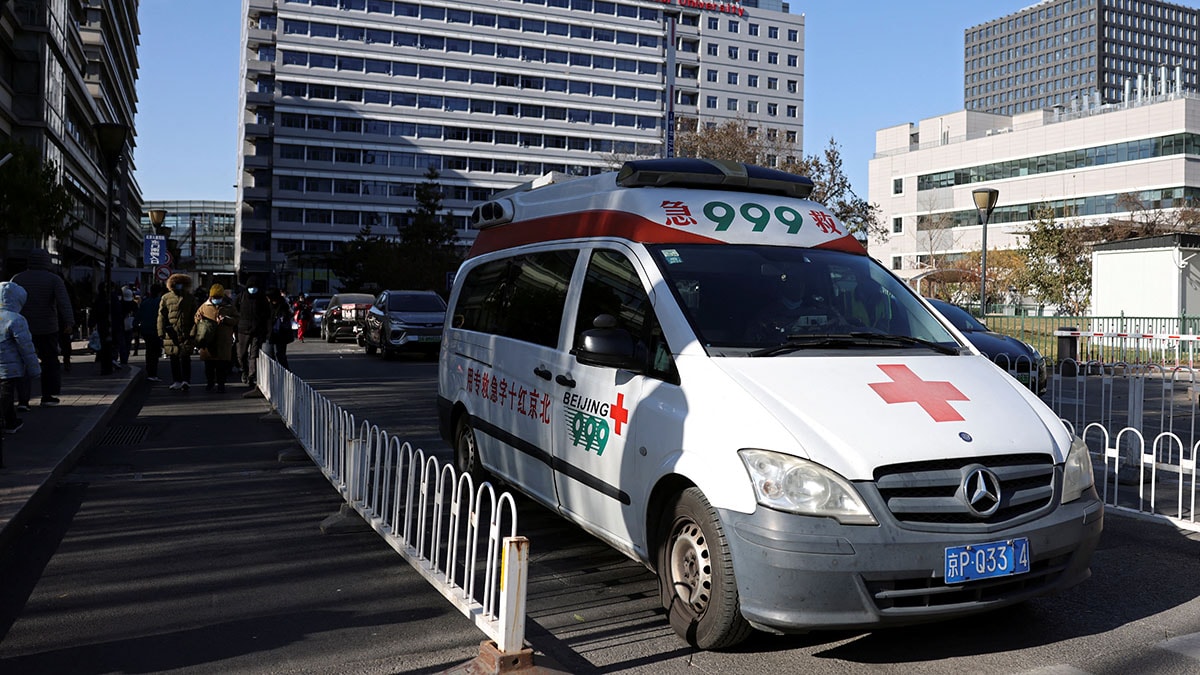
A joint circular from China’s Ministry of Commerce, National Health Commission, and National Medical Products Administration announced that foreign investors will now be permitted to operate hospitals in Beijing, Tianjin, Shanghai, Nanjing, Suzhou, Fuzhou, Guangzhou, Shenzhen and Hainan province. According to the South China Morning Post , China plans to allow fully foreign-owned hospitals and enable foreign investors to offer human stem cell and gene therapy services within pilot free-trade zones. This initiative aims to attract foreign investment and stabilise economic growth.
While India already has a thriving medical tourism sector, China is at the early stages, expecting a future boom. Both countries are increasingly drawing international patients seeking affordable, high-quality healthcare services. India has positioned itself as a global leader, while China focuses on expanding its healthcare sector, particularly in advanced fields like gene therapy and biotechnology.

Growth trajectory and market size India: A rising giant in medical tourism India’s medical tourism sector has seen exponential growth over the last decade. In 2020, the country welcomed 1.83 lakh medical tourists.
This number increased to 3.04 lakh in 2021 and further jumped to 4.75 lakh in 2022.
Between January and October 2023, India had already welcomed 5.04 lakh medical tourists. Projections for 2024 suggest the number of medical tourists will reach 7.
3 million, up from an estimated 6.1 million in 2023, as per a Crisil report. The Indian medical tourism market is projected to be valued at $10.
3 billion in 2024 and is expected to grow at a healthy compound annual growth rate (CAGR) of 17.2 per centy over the next decade, surpassing $50.7 billion by 2034, said a Future Markets Insights report.
This growth is driven by a combination of factors including the availability of world-class amenities, a skilled pool of medical professionals and cost-effective treatment options that make India an attractive destination for global patients. China: Opening the doors for medical tourism China, on the other hand, has only recently entered the competitive field of medical tourism, focussing on advanced treatments like gene therapy and biotechnology. While China has not yet provided official figures on medical tourists, its focus on biotechnology and high-end treatments suggests that the country is aiming to attract high-value medical tourists, particularly those seeking innovative and specialised care.
Cost-effectiveness: India’s key strength India has gained its reputation in the medical tourism industry primarily due to its cost-effectiveness. Medical treatments in India are significantly cheaper compared to developed countries and even some Southeast Asian counterparts. A knee replacement surgery that costs around $40,000 in the United States can be performed in India for approximately $8,500, with better medical care and services, according to a cost comparison study by the American Medical Association.
Similarly, India offers affordable rates for procedures like cardiac surgery, orthopaedic surgeries and dental implants. The low cost of living in India further reduces the financial burden on medical tourists, especially those requiring prolonged stays for treatments or recovery. Additionally, patients can combine medical procedures with leisure activities, exploring India’s scenic beauty, rich cultural heritage and diverse landscapes, which adds to its appeal.
China’s cost structure is less transparent, but with its focus on high-tech treatments, it may not compete on price in the same way India does. Instead, China is positioning itself as a destination for cutting-edge medical research and treatments such as gene therapy and stem cell procedures, which may attract patients willing to pay premium prices for these specialised services. Infrastructure and government support India’s expanding healthcare infrastructure In December 2023, India’s Ministry of Health and Family Welfare announced loans totaling $14.
8 billion to boost healthcare infrastructure and provide working capital to companies in the tourism industry. This investment is particularly focused on tier-II and tier-III cities, which are seeing the construction of state-of-the-art hospitals by major players like Apollo, Fortis, Max Healthcare, and the Manipal Group. The expansion into these smaller cities is crucial as it makes advanced medical procedures such as cosmetic surgeries, dental implants and orthopaedic treatments more accessible.
These developments also ensure that medical tourists receive world-class care without having to travel to larger metropolitan areas. China’s free trade zones and foreign investment incentives China’s approach to medical tourism is more centred around attracting foreign investment in healthcare. While China has focussed on high-tech infrastructure, restrictions still remain.
Foreign entities cannot acquire public hospitals or operate in sectors related to traditional Chinese medicine. Moreover, China’s medical tourism strategy seems more targeted at long-term growth through advanced research rather than attracting mass numbers of patients immediately. Accreditation and quality assurance India’s NABH accreditation for global confidence India has established itself as a trustworthy destination for medical tourism, thanks in part to its stringent accreditation standards.
The National Accreditation Board for Hospitals & Healthcare Providers (NABH) is recognised internationally, as it is accredited by the International Society for Quality in Healthcare (ISQua). This ensures that hospitals in India meet international standards, providing patients with the confidence that they will receive high-quality care. NABH accreditation also extends to Medical Value Travel Facilitators (MVT), an otherwise unregulated segment within medical tourism.
This international recognition, coupled with India’s focus on cost-effective treatments, has made India a top choice for medical tourists seeking both affordability and quality. China’s focus on advanced treatments While China has taken steps to open its healthcare system to foreign investors and biotech firms, its accreditation system is still developing. China is focussing on ensuring that the advanced treatments offered in its free-trade zones, such as stem cell therapy and gene therapy, meet high regulatory standards.
However, as China’s medical tourism industry is still relatively new, it remains to be seen how effectively these standards will be enforced and whether they will inspire the same level of confidence as India’s NABH-accredited hospitals. Challenges and competition India’s negative perception and competition from Southeast Asia Despite its advantages, India’s medical tourism sector faces several challenges. According to a Future Markets Insights report, the affordability of India’s healthcare services sometimes leads to a perception of lower quality.
Additionally, India’s historical vulnerability to terrorism has created concerns about safety for some international patients. The country also lacks a single unified body to regulate medical tourism, which can lead to inconsistencies in quality and patient safety across different regions. India also faces stiff competition from other Southeast Asian countries like Singapore, Thailand and Malaysia, which offer similar treatments at competitive prices.
However, India’s cost advantage, coupled with its vast medical expertise, helps it retain a competitive edge in the region. China’s regulatory and economic hurdles China, too, faces challenges in its medical tourism ambitions. While the country is opening up its medical sector to foreign investment, its domestic economic slowdown and tensions with countries like the United States may hamper its ability to attract the same level of foreign investment as other destinations.
Additionally, China’s focus on high-end treatments like gene therapy may limit its appeal to a broader base of medical tourists who seek affordable healthcare solutions. Path forward India and China are both rapidly emerging players in the global medical tourism industry, but they are taking different paths to success. India has established itself as a leader in affordable, high-quality medical treatments attracting millions of patients each year.
Its focus on expanding healthcare infrastructure and ensuring international accreditation makes it a reliable destination for medical tourists seeking cost-effective care. China, in contrast, is positioning itself as a hub for advanced, high-tech medical treatments, particularly in the fields of biotechnology and gene therapy. While it has not yet reached India’s scale in terms of patient volume, China’s investment in healthcare innovation may help it attract a niche market of patients seeking cutting-edge treatments.
Ultimately, both countries are set to play significant roles in the future of medical tourism, with India dominating in terms of affordability and volume, while China carves out a niche in advanced medical research and high-tech treatments..














